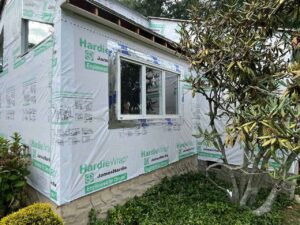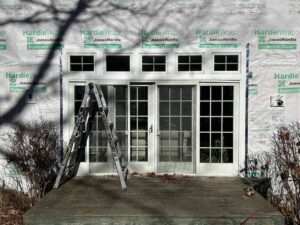With winter now in full swing, you may be wondering how you can make your home more energy efficient and reduce your heating bills. When it comes to improving your home’s energy efficiency, windows play a key role. Energy-efficient windows can help keep your home cooler in the summer and warmer in the winter as well as reduce your reliance on air conditioning and heating systems. Besides helping you save money on utility bills, energy-efficient windows also provide additional advantages such as stronger protection from outdoor noise, improved indoor comfort levels, less fading of furniture fabrics, and better security against burglars. In this blog post, we’ll explore the benefits of investing in energy-efficient windows for your home.
Energy-efficiency ratings
If you’re considering replacing your current windows or installing new ones, understanding the basics of energy-efficiency ratings can help you make an informed choice. When shopping for windows, you’re likely to hear about the U-factor and Solar Heat Gain Coefficient (SHGC) ratings. The U-factor rating is a measure of how much heat is conducted through the window material and how much insulation it provides. The higher the U-factor rating, the less insulating power it provides. The SHGC rating measures how much solar radiation is transmitted through the glass and indicates how well a window will reflect heat from sunlight back into your home during warm months. The lower this number, the better for keeping your home cool when temperatures rise outside.
To meet ENERGY STAR® qualifications and earn these labels, windows must achieve a U-factor of 0.30 or less and an SHGC of 0.20 or less – depending on where you live geographically in terms of climate zones – ensuring maximum energy savings all year round in any part of the country.
Other features to consider
While U-factor denotes insulation value, other window features also affect their energy-efficiency performance. Advances in window technology have brought us a plethora of energy-efficient options. Window construction methods, gas fillings, films, and coatings can all be used to help improve the energy-efficiency of your home’s windows. Even simple curtains or shades can boost efficiency.
Construction methods
Window construction makes a huge impact in energy performance. Single-pane windows (or windows consisting of a single layer of glass) are the least expensive, but also the least efficient. Double-glazed or double-pane windows have two panes of insulating glass with a layer of air between them that adds thermal protection against heat loss during winter months and keeps cool air inside during hot seasons.
High-performance triple-glazed windows provide a barrier against air infiltration. With three layers of insulated glass, triple-glazed windows can achieve up to 50% more efficiency than single- or double-glazed windows. Multiple layers in glass can also help prevent condensation and fogging in the winter months.
Gas fillings
Gases such as argon, krypton, and xenon are used to further insulate windows. Gases are less conductive than air, meaning they can reduce the transfer of heat and cold air through the window glass. Furthermore, gas-filled windows also block ultraviolet rays from entering your home and prevent the fading of furniture and other interior items. And finally, gas fillings help insulate the space between window panes for extra insulation. When combined with high-performance glazing options such as Low-E coatings and multiple glazing layers, gas-filled windows provide superior insulation to keep your home comfortable while saving money on heating and cooling costs.
Films and coatings
Window films can be applied to existing windows to reduce thermal gain in summer or loss in winter, while window tinting helps limit solar heat gain and reduce glare.
Low emissivity (Low-E) glass coatings are transparent metal oxides applied to glass surfaces that help control infrared light passing through while still allowing visible light transmittance – creating a balance between natural warmth from daylight while lowering your overall cooling costs over time by reducing outdoor noise transfer to interior spaces as well as blocking harmful UV rays that cause fading of furniture fabrics and carpet colors over time.
Shades and curtains
If your budget won’t allow for all-new windows, you can still improve efficiency by other means. Shades and curtains can be a great option for window efficiency, as they provide extra layers of insulation and protection against solar heat gain. Heavy-duty cellular shades are especially effective, with tiny pockets of air providing an extra layer of insulation. Additionally, thermal curtains are designed to insulate the entire window area. By blocking drafts and reducing air leakage, shades and curtains help keep your home comfortable in both hot and cold climates. When selecting fabrics for shades or curtains, consider those with a tight weave that will resist sunlight without sacrificing style.
All of these window upgrades help preserve indoor temperature levels and block noise intrusion for better comfort and peace of mind.
Conclusion: Making smart choices for energy savings
Our window experts can guide you in selecting ENERGY STAR certified replacement windows to maximize energy savings. We can also recommend the most effective glass coatings, films, and treatments for superior energy efficiency – subsequently helping achieve maximum return on investment from this major residential upgrade project!